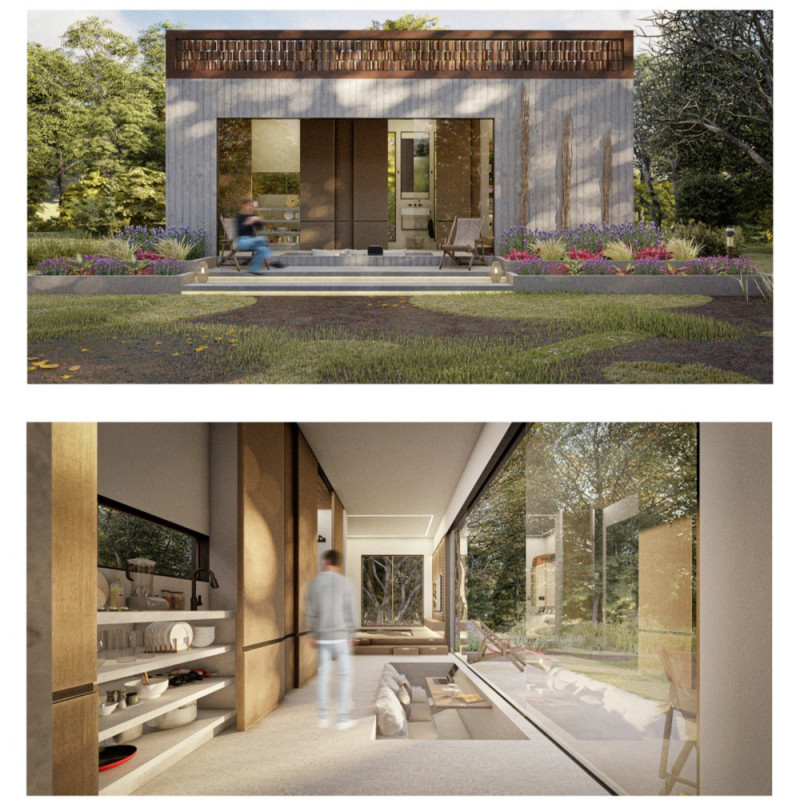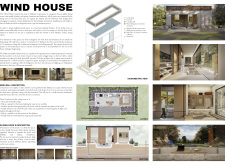5 key facts about this project
### Overview
Wind House is situated in a contemporary residential context that emphasizes a harmonious relationship between built spaces and the natural environment. The design intent focuses on creating defined areas for various social interactions, organized into public, semi-public, and private zones. By integrating modern sustainability practices, the project enhances the connection between indoor and outdoor environments while promoting efficient space utilization.
### Spatial Organization
The architectural layout strategically connects living areas through sliding doors, ensuring fluid transitions and fostering social interaction. At the heart of the dwelling, the living room serves as a communal space that leads to a versatile kitchen, allowing for both functionality and accessibility. Private areas, including the bedrooms and bathrooms, are thoughtfully distanced from communal zones, ensuring sound and visual privacy. This careful spatial division provides residents with a well-balanced living experience, conducive to both sociability and solitude.
### Innovative Features
A standout element of Wind House is the "wind wall," which integrates aesthetic appeal with functional performance. This design feature captures wind energy for electricity generation while facilitating natural ventilation throughout the dwelling. The wind wall's vegetation mitigates excessive air flow and enhances the overall energy efficiency of the house. Constructed from recycled materials, it reinforces the project's commitment to sustainability while adding a dynamic interplay of light and shadow to the exterior.
### Material Selection
Material choices for Wind House play a crucial role in its sustainability and design integrity. Wood is extensively utilized in doors and window frames, providing warmth and an organic aesthetic. The incorporation of sliding glass doors enhances visual continuity with the outside, allowing natural light to permeate the interior. Components related to the geothermal conditioning system and recycled materials in the wind wall further underscore the building's environmental strategy, contributing to effective thermal regulation and overall energy performance.




















































